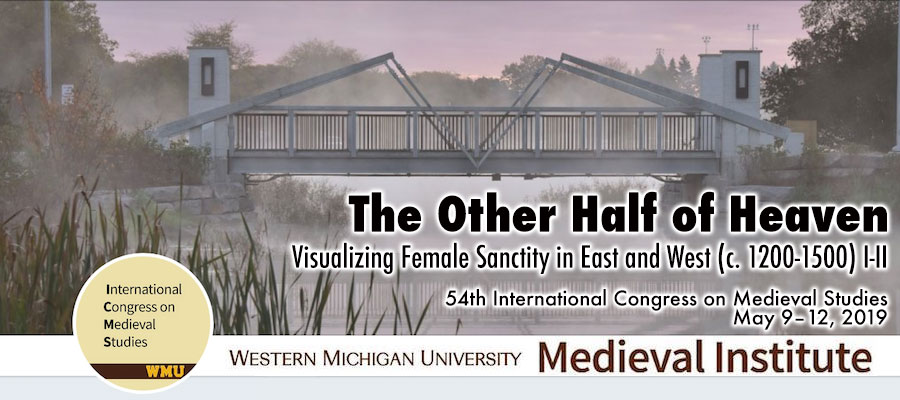The Other Half of Heaven: Visualizing Female Sanctity in East and West (c. 1200-1500) I-II, session at the 54th International Congress on Medieval Studies, Western Michigan University, May 9–12, 2019
If, according to the well-known Chinese proverb, women hold half the sky, did medieval female saints hold half of heaven? In her book of 1998, Forgetful of their Sex: Female Sanctity and Society, ca. 500-1100, Jane Schulenburg calculated that of over 2200 female and male saints examined, only one in seven (or 15%) were women. Although documentation on medieval women is notably scarce, this gender-based asymmetry in the celestial realm clearly reflected the values and hierarchy of earthly society.
Female saints were exceptional women who gained social status, popular recognition and enhanced visibility through sainthood. Medieval female sanctity is a multi-faceted phenomenon, which has been mainly explored through words. Historians and literary scholars have fruitfully mined historical and hagiographical texts not only to draw ‘facts’ about the lives of female saints but also to elucidate social mentalities and highlight gender issues. Holy women, however, were also represented on a variety of media, most notably on icons, frescoes, manuscript illuminations and other artworks. Nevertheless, despite the wealth of historical and hagiographical scholarship on female saints, their visual representations have been exploited almost exclusively in stylistic or iconographic terms.
The aim of this session is to consider female sanctity in visual terms both in Western Europe and the Byzantine East. By exploring representations of women saints and their changing iconography, it aspires to shed light on their status and experience in late medieval society. It will examine images of holy women as embodiments of cultural models and explore the social and religious environment that shaped their visual constructions. In the highly symbolic world of the Middle Ages, representations of female saints can become a vehicle for multiple interpretations, including social status, gender, identity, ethnicity and collective memory.
Some of the issues to be addressed include but are not restricted to:
- Visual narratives and iconographic attributes defining female sanctity
- The corporeality of female saints and the representation of the holy body
- The iconography of transvestite holy women
- Out of sight, out of mind: forgotten saints and newcomers
- The relation between female holy images and text in illuminated manuscripts
- The influence of mendicant literature on picturing female sanctity
- One saint, many images: changes in iconography and meaning
- Iconographic variations of the Virgin in East and West
Session Organizer
Ioanna Christoforaki, Academy of Athens
Session Sponsor
International Center of Medieval Art (ICMA)
